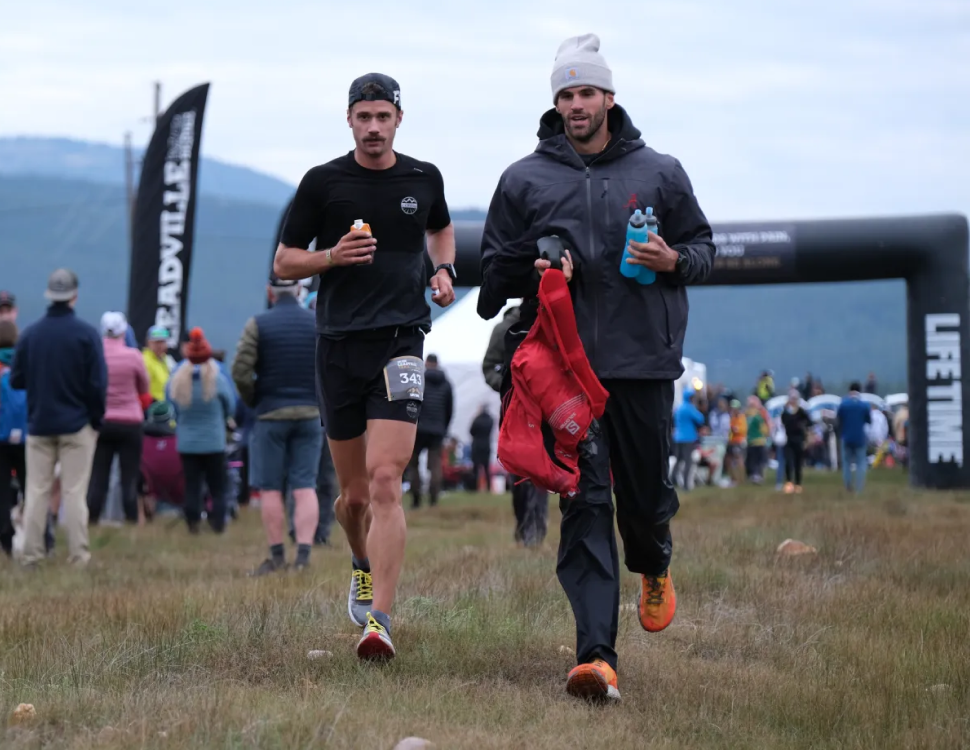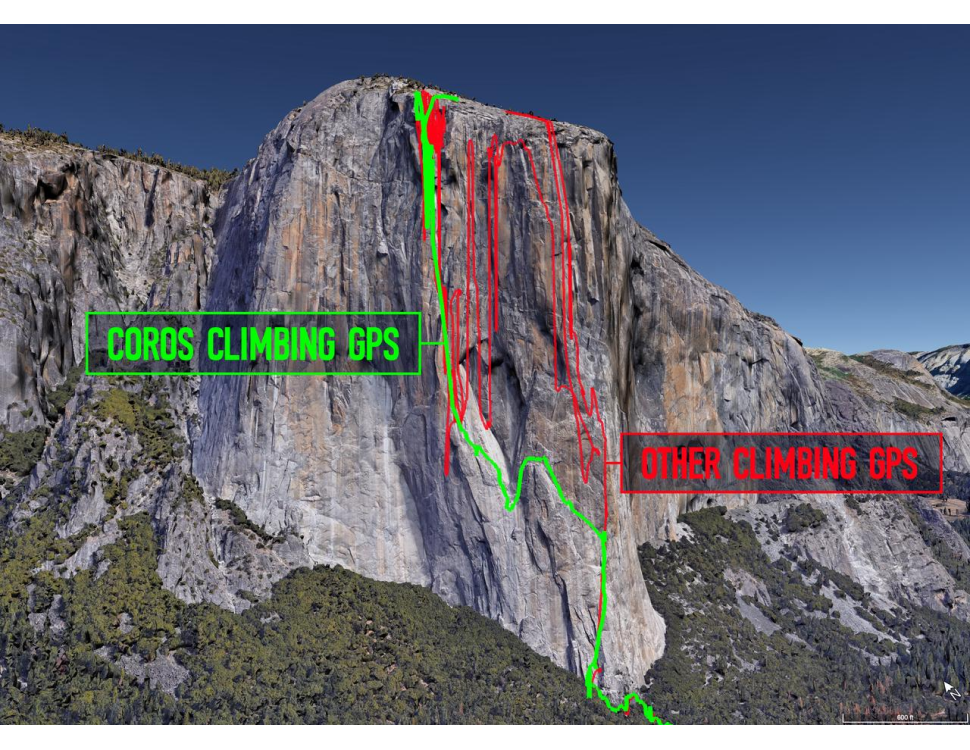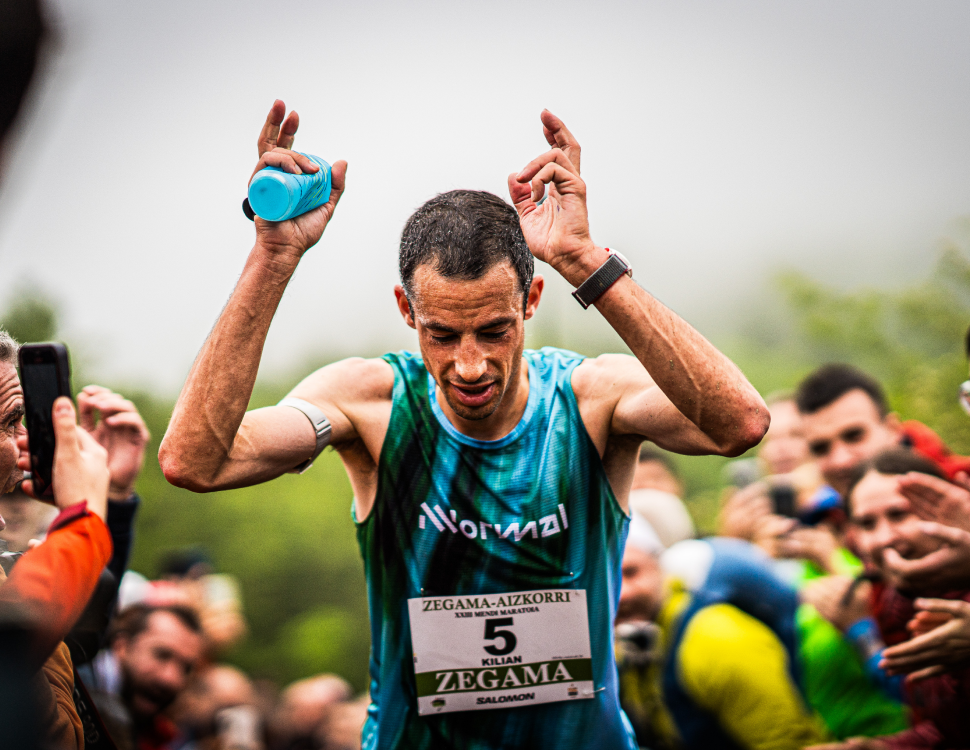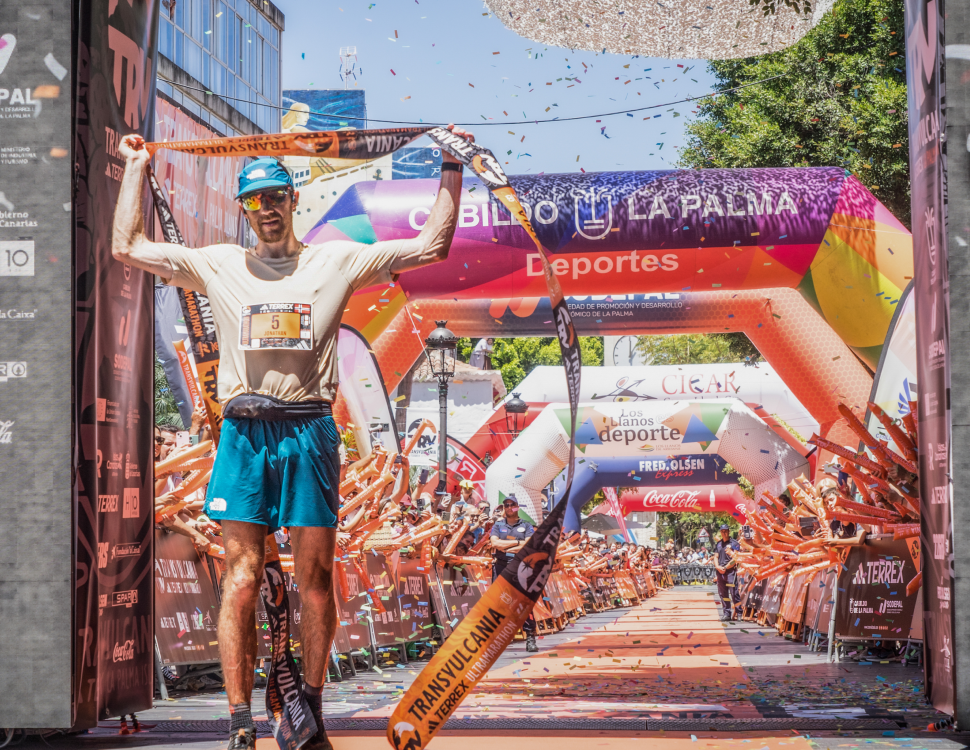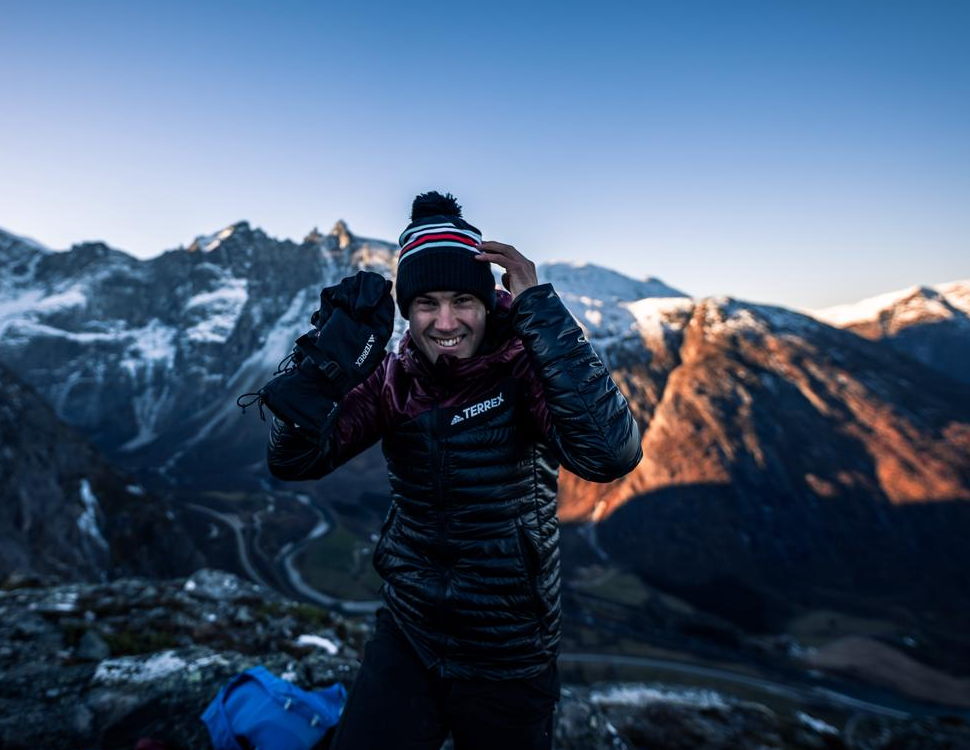Luke Smithwick is no stranger to the Himalayan backcountry and its impressive mountain range. Owner and founder of Himalaya Alpine Guides, Luke spends most of his time in the Himalayas either guiding or exploring the areas on skis.
In 2010, Luke decided to embark in a unique adventure that will surely make you dream of picturesque high-altitude mountains in the heart of the Himalayas. Sit back and relax as we are taking you through Luke's latest adventure, The Himalayas 500.
The Himalaya 500
With a passion for the Himalayan mountains and a strong desire to explore this gorgeous area, Luke set out to complete 500 ski lines to highlight the diversity of the 1550-mile Himalayan range.
The Himalaya 500 is a personal project I started in 2010 in a quest for 500 aesthetic ski lines that highlight the specific areas of the greater Himalayan range as a whole. But this project isn't about me; this is about a mountain range that keeps me awake at night.
However, Luke does not set up for the easier, more accessible regions. He emphasizes the exploratory aspect of this project, which will take him into the areas where he thrives, the unexplored Himalaya of Tibet, Nepal, Pakistan and India. Smithwick speaks seven languages and holds degrees in Cultural Anthropology and Environmental Biology.
There is a lot of variety to experience all throughout it, yet when you mention the Himalayas to many people, they say, "I would love to go to Nepal," or, "I would love to see Everest." The Kumbu region of Nepal (where Everest is located) is a tiny valley of the massive, 1,500-mile stretch. I really want to show more of it.
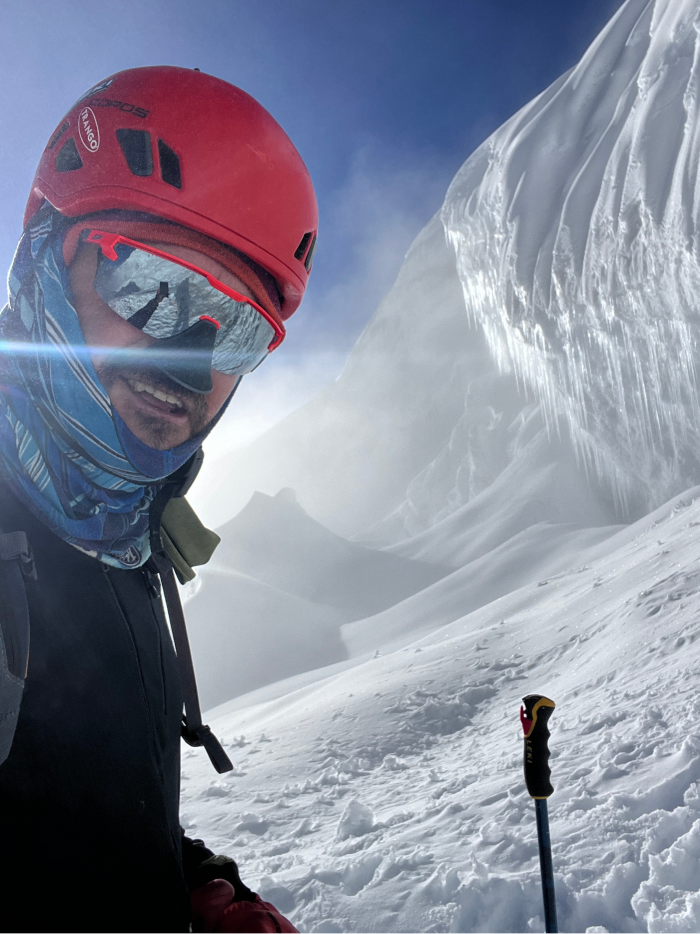
Luke climbing Manaslu (8,163m) in September 2023.
In order to sustain such a high volume of training at high altitude, Luke has no other choice but to build a strong aerobic base during the off-season. This capacity allows him to recover more quickly in between climbs as well as limit potential symptoms that often come with altitude. Luke also takes time to monitor his SpO2 via his COROS VERTIX 2 during both recovery days at base camp, but also as he gets higher up the mountain.
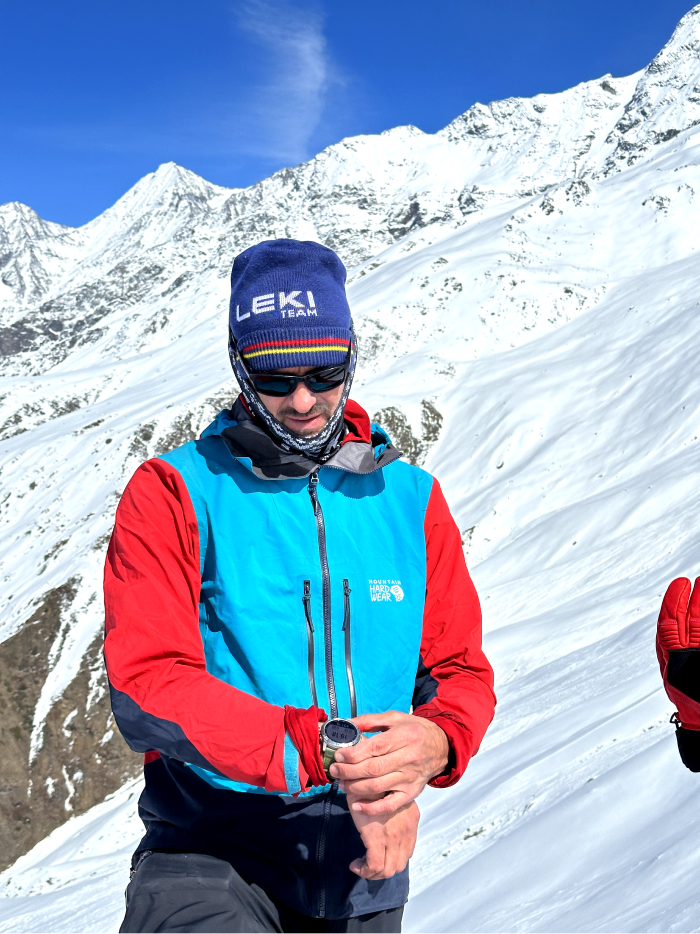
Luke monitoring SpO2 during climbing at 5,000-6,000m.
SpO2: Refers to your saturation of oxygen displayed as a % value on your COROS watch after a manual data collection. A high value (>80%) means your body is ready to climb higher. A lower value (<80%) means you should rest and let your body acclimatize.
Navigating Through the Unknown
Luke's experience as a ski mountaineer and a guide allowed him to go beyond what has already been explored in the area and handpicked a wide variety of unique routes to ski, including some of the highest mountains in the world above 8,000m.
I have skied an 8,000m peak for the project and will be pursuing more in the future, however, there is a lot to be explored in the 4,000-8,000m elevation range in the Himalayas.
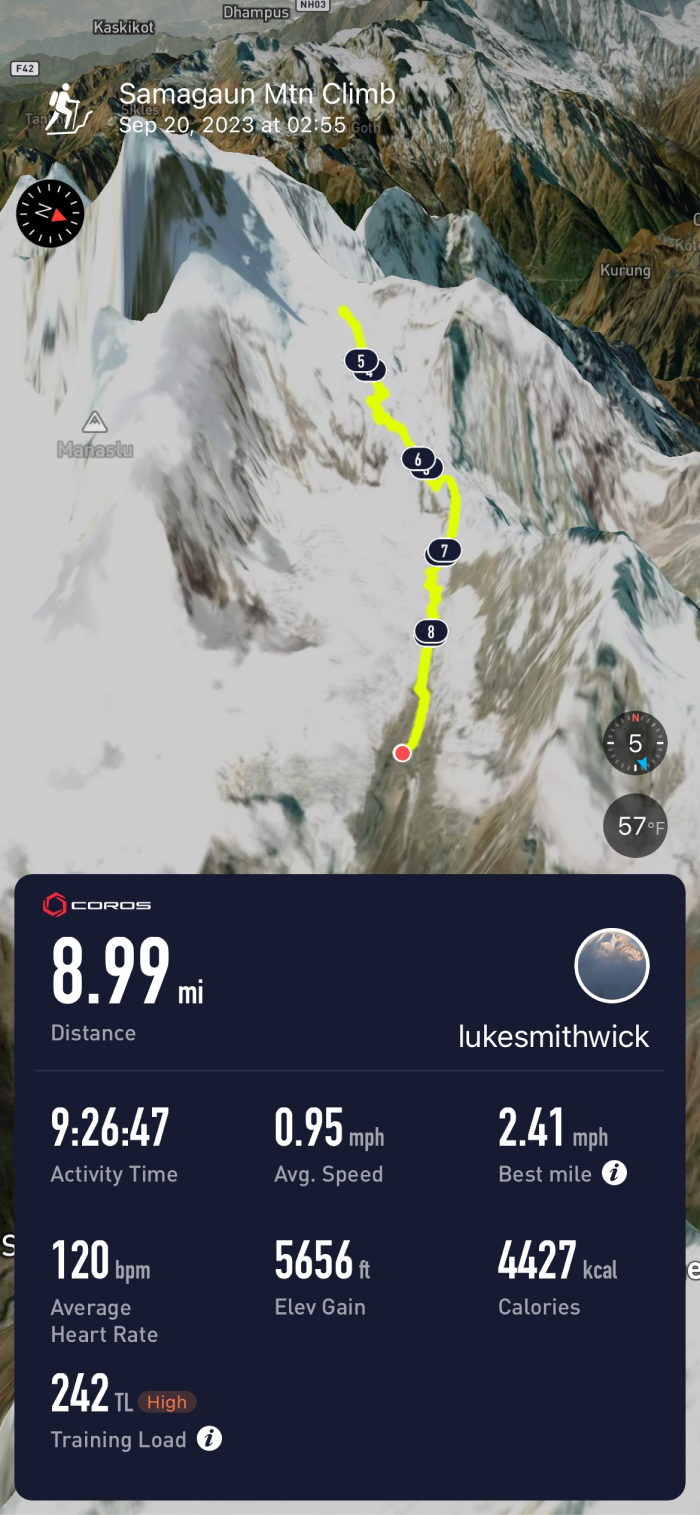
Luke's ascent of Manaslu (8,163m) from Base Camp to Camp 3 (out-and-back) on September 23rd.
Aside from the massive peaks that surround the North side of Nepal, Luke has explored quite a significant amount of terrain all across the Himalayas. While not all of the routes completed were 'iconic', Luke still managed to successfully complete first ascents and descents of several unknown mountains. Despite his experience in this terrain, Luke still has to be cautious and aware of the ever-changing climate that those mountains constantly throw at him.
While these experiences are beautiful, it’s not all as picturesque and dreamlike as it all sounds. Glaciers are retreating, ice lakes are releasing, weather is becoming more sporadic and unpredictable. In an environment of constant change, I have to proceed with caution with this ski project, choose terrain wisely, and listen to the ‘how’ and the ‘why’ as I go.
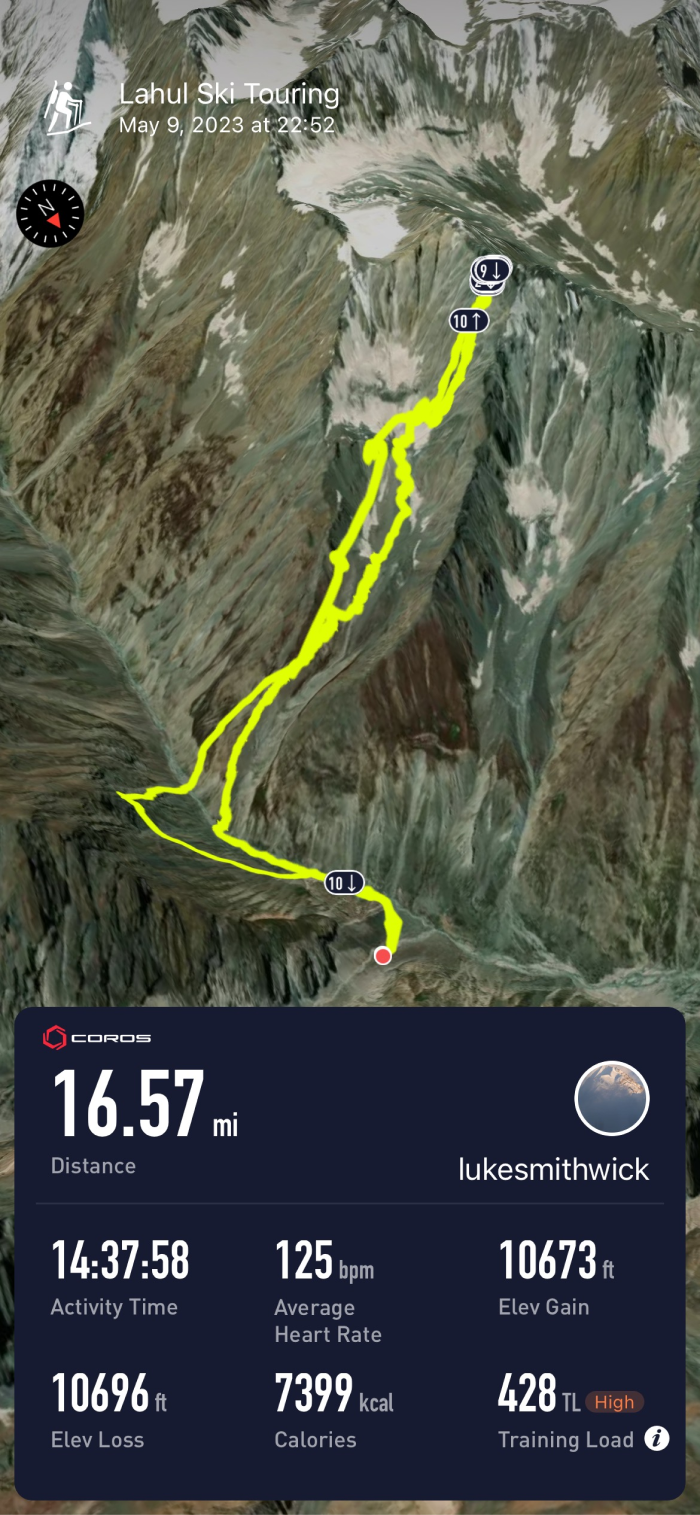
First ski descent in the Lahul region, India.
Thanks to his COROS VERTIX 2, Luke can navigate through difficult terrain with his route picked on the topographic map of his watch. At high altitude, clouds can quickly roll in and leave you in a complete whiteout just as if you were stuck inside a ping pong ball. Navigation then becomes crucial and sometimes life-saving.
GPS route tracking enables me to retrace routes through icefalls, during whiteouts, and while planning for future seasons and years in the Himalaya.
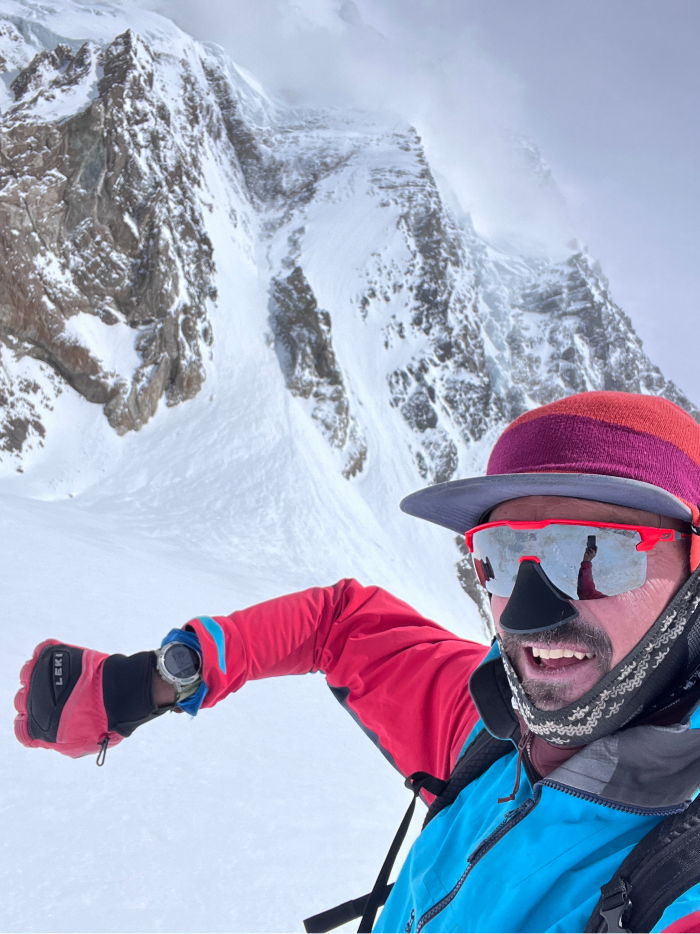
Luke with the VERTIX 2 during a first ascent in the Karakoram range, Pakistan.
A Cultural Experience
While it may be easy to see this project as an incredible human achievement, Luke's main objective remains to share the cultural abundance of the Himalayas and its communities. Luke also wants to provide valuable insights into ski areas across the Himalayan range in an effort to bring people together through mountain sports.
As humans, we are constantly trying to find familiarity in daily life: this view reminds me of this; this sound reminds me of that—the process of “discovering” to me is a great gift, and that can come in the simplest of ways on an expedition.
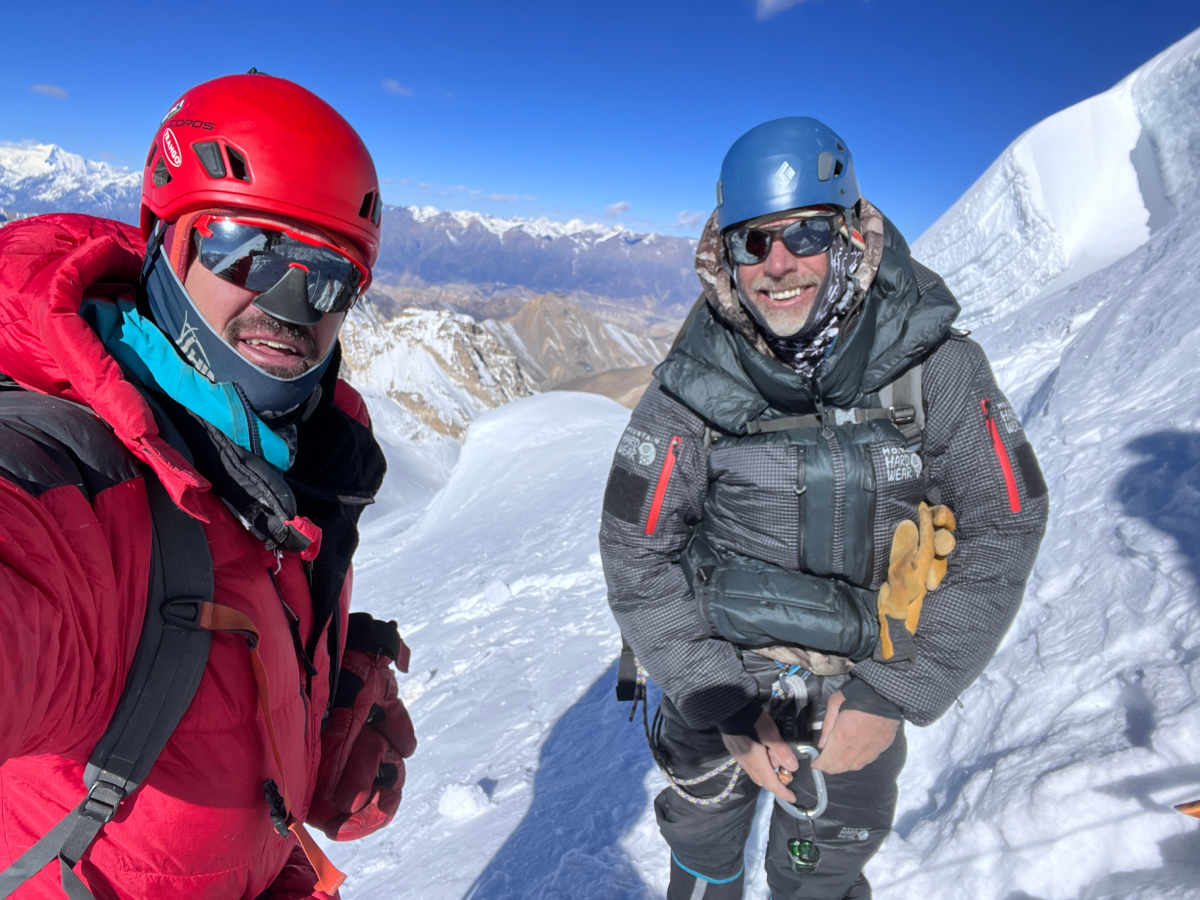
Luke with his climbing partner during their first ascent of Khamjung Himal South Face at 6800m in October 2023.
What's Next?
Now that over half of the project is completed with a consistent 8-10 Himalayan expeditions each year, Luke will embark on his 97th expedition in February 2024 and explore several new areas on skis before attempting major routes later in the season, including Nanga Parbat (8,126m), Gasherbrum I (8,080m) & II (8,031), and Labuche Kang III, the world's highest unclimbed peak.
The COROS team congratulates Luke for this amazing accomplishment thus far and wishes him success on his projects for 2024!
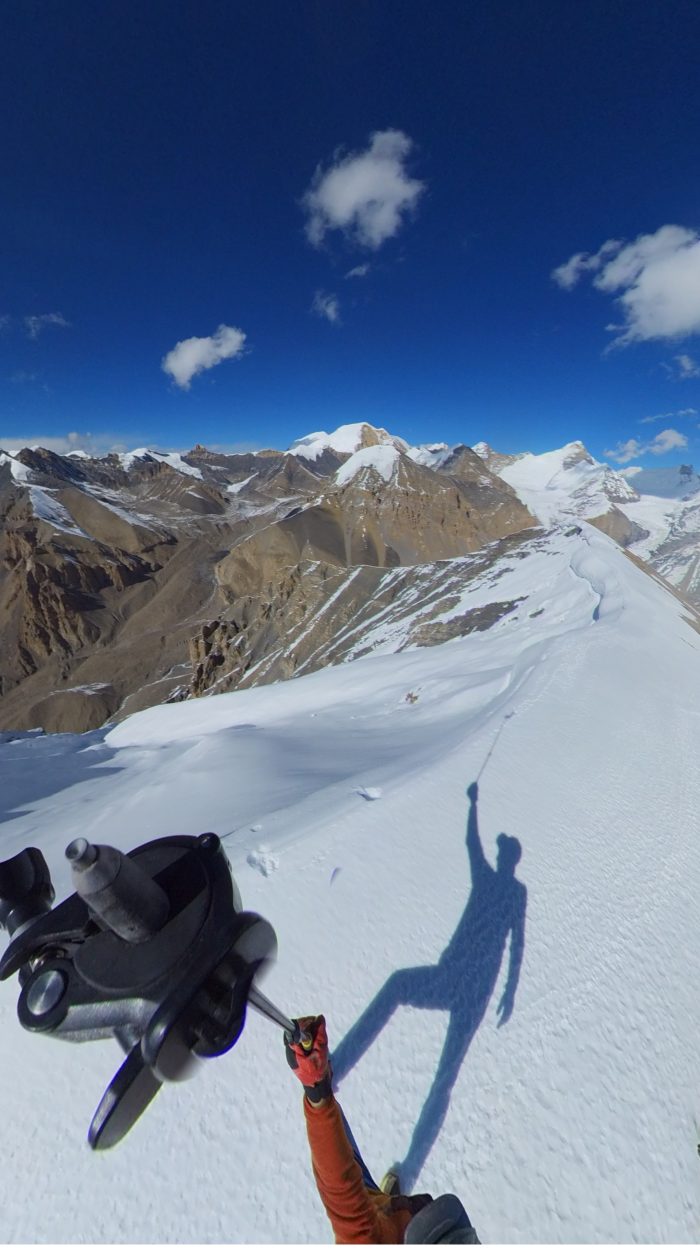
Luke during first ascent of Gorak Himal (5,980m) in October 2023.
/fit-in/0x18/coros-v2/images/common/logo_black.png)
